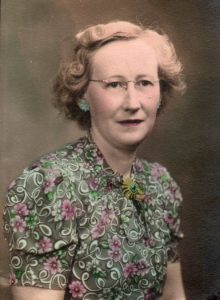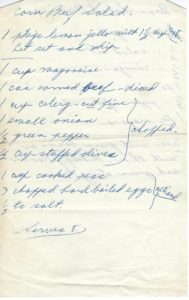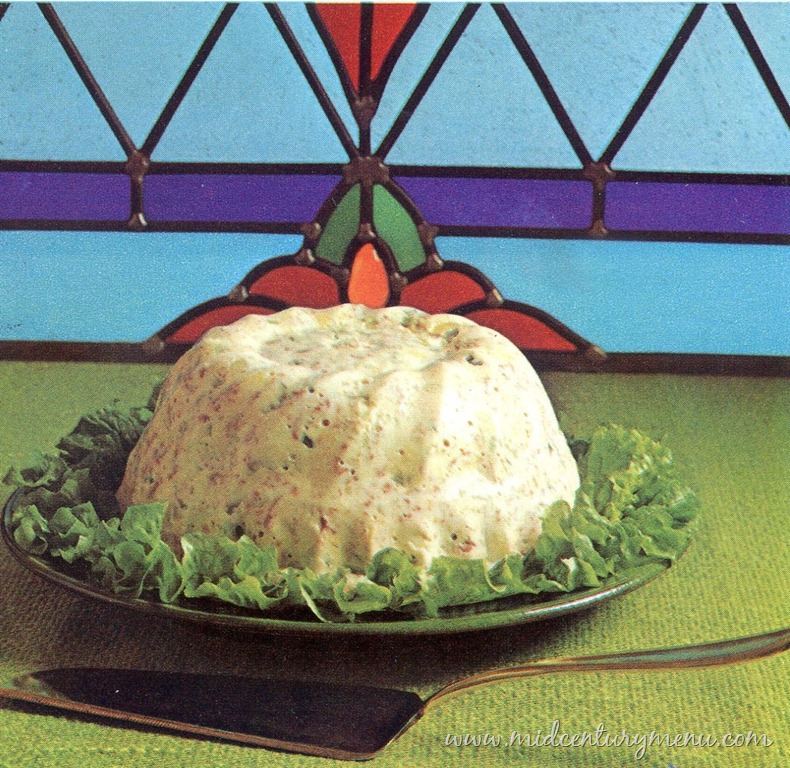
My parents are gradually cleaning out their basement. They’re offloading things from my childhood onto me and making the tough decisions about which of their own belongings they want to keep for sentimental reasons and which can go. They’ve also inherited stuff from multiple branches of the family, and I get to pick through most of it for things I think are interesting artifacts of family history.
One of the things my mom recently set aside to show me was a recipe hand-written by my great-grandmother Isabelle (Daly) Jordan. I have previously written about the persistence of ethnic culinary traditions in America using the examples of Isabelle’s grandparents William and Mary Reynolds and her husband Basil Jordan, all Irish-Americans who loved potatoes. Isabelle indeed cooked a lot of potatoes. But at the same time, she was as much a woman of twentieth century middle America as her Italian-American, Swedish-American, fill-in-the-blank-American neighbors, and she modernized her cooking accordingly…
…for better and for worse. Isabelle’s recipe is a mid-century classic. Have a look.

When your lead ingredients are corned beef and lemon jello, you know you’re in for a treat! Mix in mayonnaise, green peppers, olives, and hard-boiled eggs, let chill until firm, and you’ve cooked up the perfect space-age dinner for your family! Yum! It was probably supposed to look something like this.

But actually turned out more like this.

This recipe is now a little family treasure. Isabelle probably copied it out of a friend’s cookbook (perhaps this one) and we can suppose she made it for her family at least once.
A few years ago, my wife and I had a good laugh at a cookbook full of similar recipes that my grandmother Verla had once used. We 21st-century gourmands scoffed at the notion of suspending shrimp in jello and took pleasure in our culinary superiority. But I have no idea which of the recipes in the cookbook Verla actually prepared as food for her family on a regular basis. The fact that Isabelle took the time to hand copy this recipe for her own use makes it that much more special.
My wife and I are not alone among millennials ridiculing the culinary choices of our mid-twentieth century ancestors. For example, there are Pintrest boards dedicated to unearthing “Unfortunate Gelatin” and other “Unfortunate Food” from mid-century recipe books. A few brave people have been bold enough to test some of the worst recipes and report their findings to the world. Blogs like Mid-Century Menu, and Dr. Bobb’s Kitschen (whose authors gelatinized up something very similar to Isabelle’s recipe and produced the second photo above), make for excellent reading. (Neither my wife nor I like olives or hard-boiled eggs, so this is not a recipe we plan to try any time soon.)
The historian in me remains fascinated. Why would people—urban and rural alike—turn away from wholesome farm cooking in favor of high-tech “food products” like jello and TV dinners? Was the convenience and cultural capital really worth it? Regardless, I think the writers at Mid-Century Menu have it right. “Like it or not, these horrible recipes are part of the culinary evolution of our country. The pilgrims didn’t just come across the water on the Mayflower with their heads stuffed full of Asian fusion cuisine. It was a long, painful and sometimes disgusting road that lead to our current national gourmand status. Most people like to forget about it. I think we should embrace it. Yeah, at one point it was the height of fashion to have sour cream mixed with powered french onion soup mix at your party. Let’s acknowledge it and be proud.”
Recipes like Isabelle’s Corned Beef Salad are part of our shared American heritage. They were produced at a specific time and place and in a specific cultural context. By cooking these recipes for their families and sharing them with their friends, our ancestors were part and parcel of that history. If you inherited recipes or cookbooks that document it—or even better, if your family still makes salads suspended in jello—then you, like me, are the proud owner of a unique artifact of family history.
